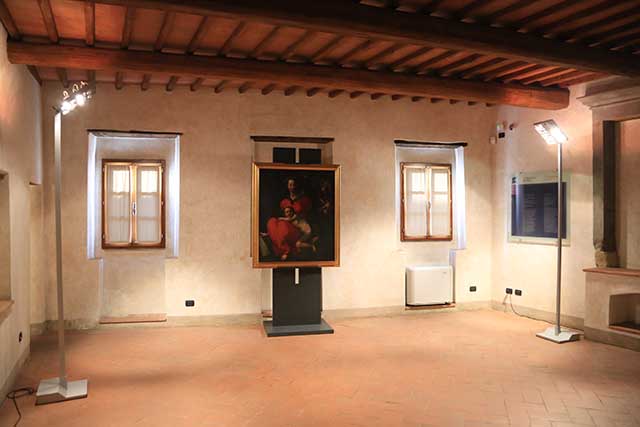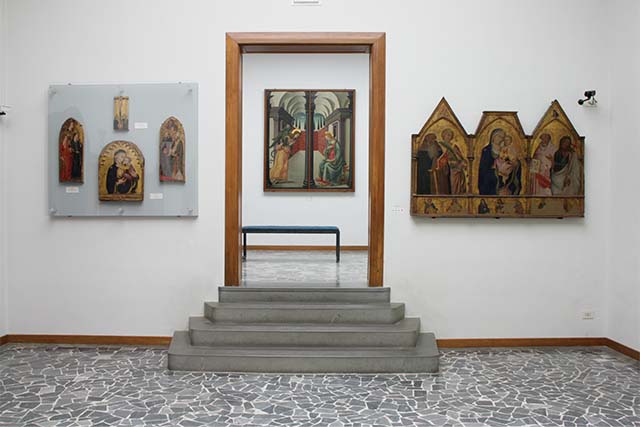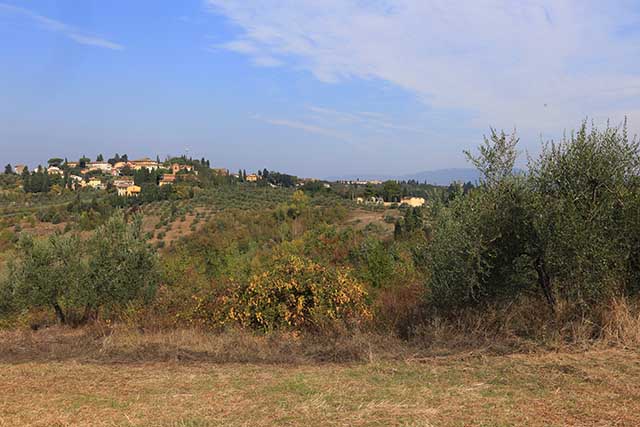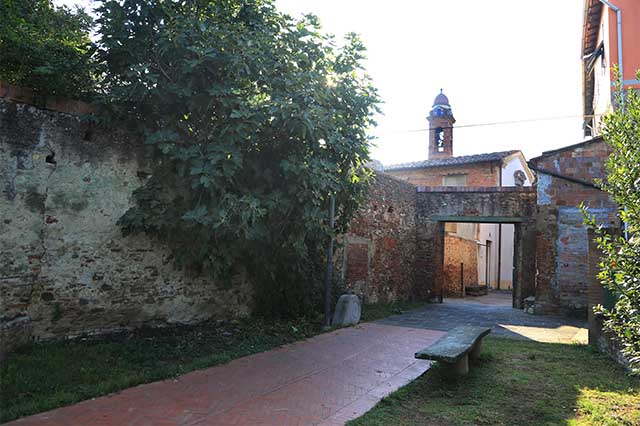Municipality of Empoli
In this building of the ancient village lived Jacopo Carucci, called Pontormo, the undisputed protagonist of Florentine mannerism. It has become one of the Houses of Memory and a research center dedicated to the work of the highly original artist. On the occasion of the Leonardian Year 2019, the exhibition “Leonardo and Pontormo” is being presented, dedicated to the aspects that united these two extraordinary artists, teacher and pupil, both natives of this land. A video installation involves the public in the narration of the lesser-known aspects of the tormented biographical story of Pontormo.
Empoli was born at the beginning of the 12th century on the initiative of the noble Guidi family. The document describing what was a genuine, ex novo creation of a settlement around the parish church of Sant’Andrea dates to the year 1119. But the beautiful, quadrangular, walled village Leonardo depicted in his bird's eye view in the Windsor Castle collection shows nothing remaining from the ancient Guidi castle. The walls of Empoli depicted in Leonardo’s drawing were constructed starting in 1466, with contributions from the most talented military architects then at the service of the Medici: Antonio il Vecchio and Giuliano da Sangallo.
The castle of Monterappoli, an ancient fortified town of the Counts Guidi, was represented by Leonardo still surrounded by defensive walls with towers. In fact this was the appearance that it must still have had at the beginning of the 16th century. Of the castle of Monterappoli and of its villages, described in numerous fiscal sources and in the statutes of the small rural municipality, nothing remains other than the castle church, San Lorenzo, preserved in late forms among the houses of the small hamlet of Monterappoli, where the Via del Castello recalls the origins of the small town of the Valdelsa.
The Paleontological Museum of Empoli offers us the possibility of discovering the origin of the geological formations that aroused so much interest in Leonardo. Among the folios of the Codex Leicester, Leonardo makes many references to the gravels of Montelupo and Capraia, and to the bluish muds of Collegonzi, very rich in nichi (fossil shells). The museum conserves, among others things, collections of Pliocene malacofauna (mollusk life) discovered at Spicchio sull'Arno, near Collegonzi, the very same nichi observed, collected, and drawn by Leonardo.
Today, Pontorme is a small hamlet of Empoli that the intense urbanization of recent times has completely engulfed. The form of the ancient castle of the Alberti, and of the small village that grew up outside the eastern gate along Via Pisana, can be recognized only by looking into the network of the streets revolving around the church of San Michele Arcangelo. Leonardo depicted the small fortified village of Pontorme in the form it had reached during Florentine domination, when it was surrounded by new walls. On one of the towers, the civic bell, created in 1278 by magistri campanari who came from Florence, resounded.









